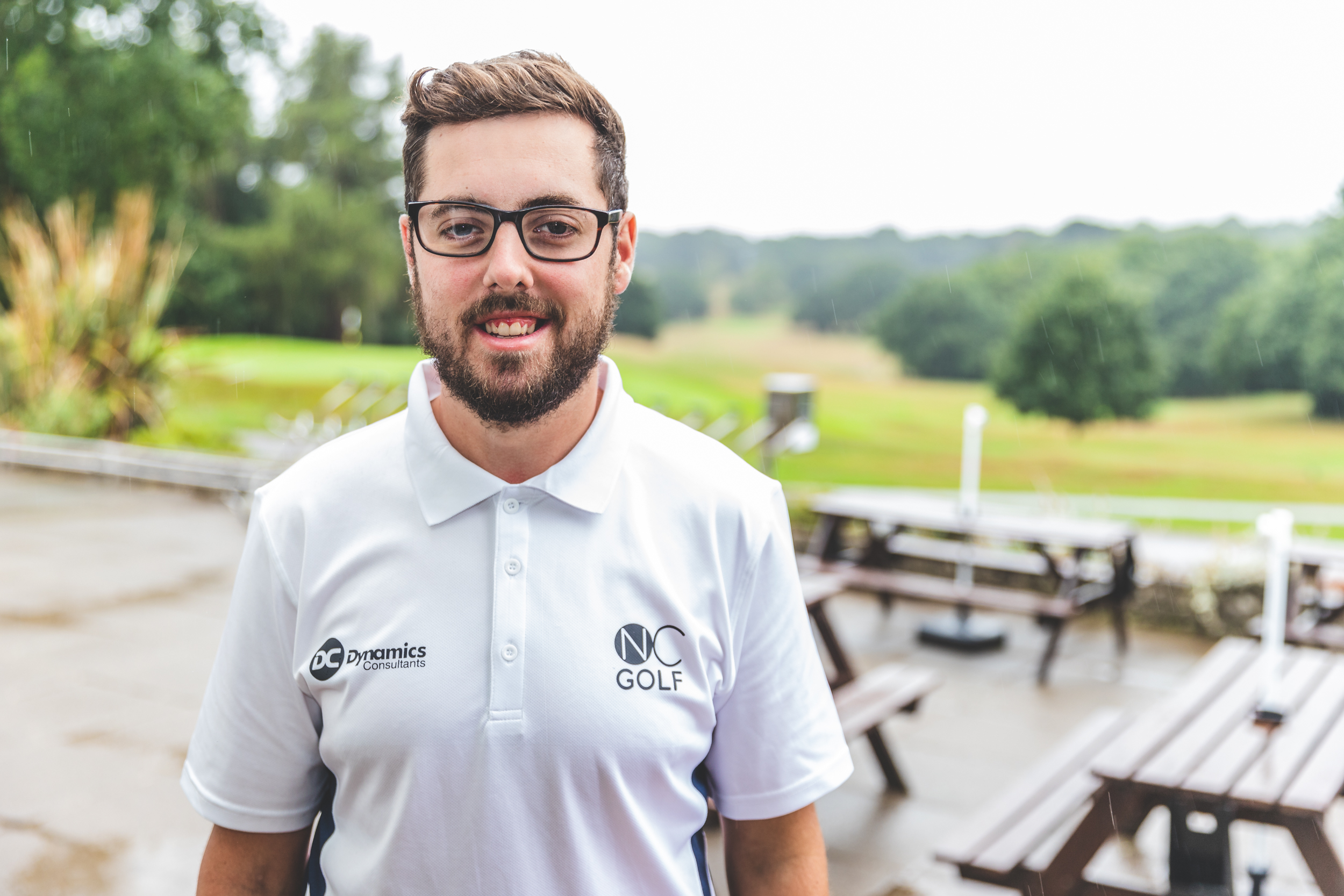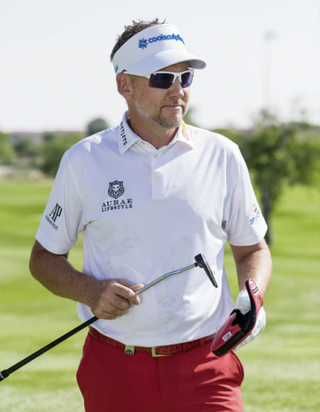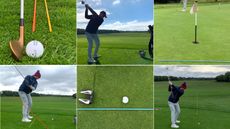Ian Poulter Putting Tips: How To Putt Like A Pro
Ian Poulter shares some of the secrets that have made him deadly on the greens throughout his career


Ian Poulter shares some of the secrets that have made him deadly on the greens throughout his career
Ian Poulter Putting Tips: How To Putt Like A Pro
I was always a pretty good putter from an early age.
Putting was just something I practised a lot when I was at the club, whether that was as a junior spending a lot of time on the putting green or when I was working in the shop and had a break.
I quickly picked up the natural feel of putting and was able to visualise putts going in, which I think is key.
Putting has always been an aspect of the game I have really enjoyed and I hope my insight will help you become more effective with the flat-stick this season.
Different Strokes
Get the Golf Monthly Newsletter
Subscribe to the Golf Monthly newsletter to stay up to date with all the latest tour news, equipment news, reviews, head-to-heads and buyer’s guides from our team of experienced experts.
In today's game of golf there is no right or wrong.
If you look at the strokes of some of the best putters in the world, you’ve got left hand below right, right hand below left, long putters, short putters, claw grips, fingers down one side and so on.
There are so many different styles in the world's top 50.
For instance, Tommy Fleetwood putts very differently to Justin Rose.
Justin uses a different putter to other guys on tour and you’ve got Adam Scott using the long putter. There is no perfect technique.
The key is to be comfortable in your style.
To be able to do this, you have to visualise the putt, read your line and pace and then make the stroke.
How you do the last bit is up to you.
Feel versus technique

I am a feel putter. I like to read the putt, stand over the ball and then make the stroke.
To my mind, if you are worrying about putting technique then you are already eating too much time into the 40 seconds you’re given to hit the putt.
So I think the more natural you keep it, the more relaxed you'll be.
If your visualisation skills are working and you can see the line of the putt then it frees you up to go ahead and execute the stroke.
If you get technical and start thinking ‘Are my shoulders square?’, ‘Are my hands in the right position?’, ‘Is my ball position right?', ‘Are my hands too far in front of the ball?’ then you’re not thinking about line and pace, which are the real keys.
Speed dictates line
To read a green thoroughly there are a number of variables you need to factor in.
You need to understand percentage of slope, grain and most importantly speed. Speed dictates line more than anything else.
Essentially there are three different lines you can take to hole a putt.
The line that has the putt dying in the front edge, the line that has it dropping in at the side or the line that sees the ball hit the back of the hole.
Once you have decided how you want the ball to enter the hole, you can work out your line and start to factor in severity of slope and grain.
Miss high

The mistake I see amateurs making every week in Pro-Ams is under reading the break and therefore missing on the low side.
If you miss on the low side, the ball has had no chance to catch the hole and drop in.
When you next practise your putting, make a conscious effort to read more break into putts than you think there is and note where the ball finishes.
What you see on the practice green will help your visualisation on the course.
Round the clock
Drills are a useful way to spend time on the putting green and, for me, the single best one is round the clock.
I set myself the target of holing 20 out of 24 putts from between six and eight feet from different points around the hole.
If I don’t manage it first time I keep going until I do.
However, that’s difficult, so set your distance at a level where you could realistically make 20 out of 24.
Then, when you’ve achieved that, move further away from the hole.
For more tips and all the latest golf news, check the Golf Monthly website and follow our social media channels @golfmonthlymagazine on Facebook and @golfmonthly on Twitter and Instagram

Location: Hamptworth Golf Club, Dibden Golf Centre and Skylark Golf & Country Club
Nathan is an extremely passionate coach who works across a variety of clubs in Hampshire. His dad was a semi-professional footballer and coach, and he played football and tennis to a high standard growing up. The ambition was always to become a tennis coach, until he started playing golf aged 15 and he fell in love with the sport.
Greatest teaching success:
I would say I have two, the first is coaching a young lad for the previous six years who has now turned into a plus-2 handicap at 17 and is heading to college in America. The second would be a guy I met six years ago who had never picked up a golf club before but came along to a 30-minute initial lesson. He’s now a member of a golf club, a 12 handicap, has regular lessons, attends various events, brings his daughter to my junior coaching, and has genuinely become a friend.
Teaching philosophy:
I believe that golf should be for everyone; regardless of age, ability, sex or background. The clubs I teach at are all very different from members only to pay-and-play. I want to ensure that my coaching stays consistent with all of my students and am very passionate about making the game as enjoyable as possible for everyone. My weekly junior programme is very diverse with a mixture of boys and girls, and children from different ethnic and socio-economic backgrounds. I’ve also set up a golf society called the Top 100 Tour which gives all golfers the chance to play the best 100 courses in England. The idea is to offer amateur golfers the chance to play at some of the most exclusive golf courses that they might not have a chance to play otherwise.
Greatest teacher:
The head pro from the club where I grew up and learnt to play in Boston, Lincolnshire. He was a great coach, really motivated us to go out and compete against each other all the time. He produced two golfers that are now on the European Tour, one on the Challenge Tour and two PGA professionals, including myself. All from a small club with limited facilities but a great club and a passionate pro. He was definitely someone who inspired me to become a golf coach.
-
 Do The Winners Share Zurich Classic Of New Orleans Prize Money? (And What About FedEx Cup Points?)
Do The Winners Share Zurich Classic Of New Orleans Prize Money? (And What About FedEx Cup Points?)The prize money breakdown for the PGA Tour's only team event is slightly more complicated than other tournaments
By Joel Kulasingham Published
-
 Former NFL Star Tony Romo Reveals 'Insane' Scottie Scheffler Stat After Playing 500 Rounds With World No.1
Former NFL Star Tony Romo Reveals 'Insane' Scottie Scheffler Stat After Playing 500 Rounds With World No.1Tony Romo spoke highly of his good friend Scottie Scheffler, comparing him to Tiger Woods and Jack Nicklaus
By Joel Kulasingham Published
-
 7 Tour Pro Iron Play Tips
7 Tour Pro Iron Play TipsEuropean Tour pro Connor Syme gives us his top tips for sweeter iron strikes
By Andrew Wright Published
-
 How To Hit Your Irons Straight
How To Hit Your Irons StraightGolf Monthly Top 50 Coach Barney Puttick shares his advice on how to hit your irons straight using a simple alignment stick drill...
By Barney Puttick Last updated
-
 Break 100 In Golf - 10 Top Tips!
Break 100 In Golf - 10 Top Tips!Break 100 in golf with the help of Golf Monthly Top 50 Coach Alex Elliott, who shares 10 top tips to lower your handicap...
By Neil Tappin Last updated
-
 Most Popular Drill On Tour
Most Popular Drill On TourIn this video, Andy Sullivan reveals and explains the most popular drill on Tour
By Neil Tappin Published
-
 How To Use Golf Alignment Sticks
How To Use Golf Alignment SticksTop 10 tips on how to use golf alignment sticks to improve your game from tee to green!
By Neil Tappin Last updated
-
 How To Play Your Best Golf On March 29th
How To Play Your Best Golf On March 29thTips and drills for that first round back
By Golf Monthly Published
-
 10 Best Pre-Season Golf Drills
10 Best Pre-Season Golf DrillsMust try tee to green drills to help you play your best golf
By Golf Monthly Published
-
 What Is The Perfect Tee Height For Golf?
What Is The Perfect Tee Height For Golf?In this video, Neil Tappin is joined by PGA Professional Alex Elliott to answer the question what is the perfect tee height.
By Sam Tremlett Published